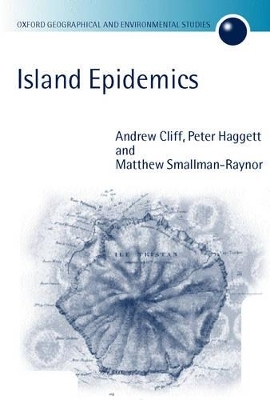
Island Epidemics
Seiten
2000
Oxford University Press (Verlag)
978-0-19-828895-4 (ISBN)
Oxford University Press (Verlag)
978-0-19-828895-4 (ISBN)
The authors show that the complex warfare of invasion and extinction observed by Darwin on the Galapagos for plants and animals applies today with equal force to the micro-organisms which lie behind many human diseases. A constant theme is the change in accessibility of remote islands.
Ever since Charles Darwin landed on the Galápagos islands in September 1835, small islands have had a special place in scientific history. In Island epidemics, the authors show that the complex warfare of invasion and extinction observed by Darwin for plants and animals applies today with equal force to the micro-organisms which lie behind many human diseases. Growing from their earlier studies of Iceland and the Fijian islands, they provide a broad world picture of diseases which range from the familiar (influenza and German measles) to the exotic (kuru and tsutsugamushi), and islands which range in remoteness from the nearby Faroes and Scillies to the inaccessible Tristan da Cunha and Easter island. A constant theme in the book is the way in which technical developments over the last 150 years, notably in vaccination and transport, are fundamentally affecting the ways in which waves of epidemic diseases circle around the globe.
As Darwin argued, islands form natural laboratories in which processes can be observed which are too complex to track in the fast-interacting city worlds, which dominate the crowded continents. The arrival of Ross River virus in the Cook islands or the decline of motor-neurone diseases on Guam can be followed with a precision, which owes much to an islands small size and limited accessibility. The revolution in molecular biology at the end of this century is emphasising how an islands genome, with peoples less mixed than in mainland communities, can provide unique genetic insights into diseases and heredity; the book reports on several examples including the interest in Icelands DNA bank.
Ever since Charles Darwin landed on the Galápagos islands in September 1835, small islands have had a special place in scientific history. In Island epidemics, the authors show that the complex warfare of invasion and extinction observed by Darwin for plants and animals applies today with equal force to the micro-organisms which lie behind many human diseases. Growing from their earlier studies of Iceland and the Fijian islands, they provide a broad world picture of diseases which range from the familiar (influenza and German measles) to the exotic (kuru and tsutsugamushi), and islands which range in remoteness from the nearby Faroes and Scillies to the inaccessible Tristan da Cunha and Easter island. A constant theme in the book is the way in which technical developments over the last 150 years, notably in vaccination and transport, are fundamentally affecting the ways in which waves of epidemic diseases circle around the globe.
As Darwin argued, islands form natural laboratories in which processes can be observed which are too complex to track in the fast-interacting city worlds, which dominate the crowded continents. The arrival of Ross River virus in the Cook islands or the decline of motor-neurone diseases on Guam can be followed with a precision, which owes much to an islands small size and limited accessibility. The revolution in molecular biology at the end of this century is emphasising how an islands genome, with peoples less mixed than in mainland communities, can provide unique genetic insights into diseases and heredity; the book reports on several examples including the interest in Icelands DNA bank.
Andrew Cliff, Professor of Theoretical Geography, University of Cambridge and Fellow of Christ's College. Peter Haggett, Emeritus Professor of Urban and Regional Geography, University of Bristol Matthew Smallman-Raynor, Lecturer in Geography, University of Nottingham
A Pattern of Islands ; Islands as Laboratories ; Island Populations: The Threshold Question ; Island Populations: The Virgin Soil Question ; The Changing Accessibility of Islands ; Internal Pathways of Spread ; Island Environments and Disease ; Island Research: A Regional Survey ; Island Futures
| Erscheint lt. Verlag | 1.6.2000 |
|---|---|
| Reihe/Serie | Oxford Geographical and Environmental Studies Series |
| Zusatzinfo | numerous halftones, graphs, maps and tables |
| Verlagsort | Oxford |
| Sprache | englisch |
| Maße | 164 x 242 mm |
| Gewicht | 975 g |
| Themenwelt | Studium ► Querschnittsbereiche ► Epidemiologie / Med. Biometrie |
| Studium ► Querschnittsbereiche ► Infektiologie / Immunologie | |
| Naturwissenschaften | |
| Sozialwissenschaften ► Ethnologie | |
| Sozialwissenschaften ► Soziologie | |
| ISBN-10 | 0-19-828895-6 / 0198288956 |
| ISBN-13 | 978-0-19-828895-4 / 9780198288954 |
| Zustand | Neuware |
| Haben Sie eine Frage zum Produkt? |
Mehr entdecken
aus dem Bereich
aus dem Bereich
ein überfälliges Gespräch zu einer Pandemie, die nicht die letzte …
Buch | Hardcover (2024)
Ullstein Buchverlage
24,99 €


